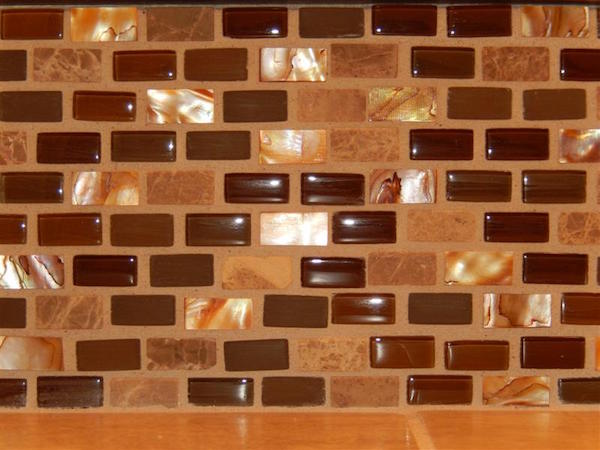
Abrams Law:
A process used to determine the strength of concrete: the ratio of the amount of water in proportion to the amount of cement in the mixture.
Abrasion:
Erosion through friction.
Absorption:
The weight of water absorbed by a ceramic specimen through immersion in relation to the weight of the dry specimen, always expressed in percentages.
Accelerator:
A substance which, when added to concrete, mortar, or grout, increases the rate of hydration cement, shortens setting time, or increases strength.
Accessories:
Items affixed to or inserted in tile work (e.g. towel bars, paper, grab bars, etc).
Acid:
A chemical substance corrosive to metals.
Additive:
A term frequently (but improperly) used as a synonym for addition or admixture.
Adhesive:
A substance capable of holding materials together. Adhesive is the general term and includes among other cement, glue, mucilage and paste.
Admixture:
A material other than water, aggregates, and hydraulic cement, added to concrete or mortar. It is added to concrete immediately before or during its mixing.
Adobe:
Sun-dried brick.
Aggregate:
Granular material (sand, gravel, crushed stone, iron blast-furnace slag) used with a cementing medium to form a hydraulic-cement, concrete or mortar.
Air-Entrainment:
The occlusion of air in the form of minute bubbles during the mixing of concrete or mortar.
Alkali:
A chemical substance that neutralizes acid material to form neutral salts.
Anglar:
Masonry composed of squared stones.
Angle Curing:
Steam curing of concrete products in an autoclave at maximum ambient temperatures between 340-420 F.
Autoclave:
A pressure vessel in which steam may be produced. Often it is used to cure concrete products and to test hydraulic cement.
Ready to start your tile project?
Find ProsBacking:
Any material used as a base over which a finished material is to be installed.
Bisque Cracks:
Any fractures in tile which is visible on both the face and back.
Bond:
The adherence of one material to another.
Bonding Agent:
A substance applied to an element in order create a bond between it and another layer.
Bond Strength:
The force per unit area or length necessary to break a bond.
Broken Joint:
Ceramic tile installation featuring each row offset for half its length.
Bullnose:
A trim tile with a convex radius on one edge, often used for finishing the top of a wainscot.
Bullnose Corner:
A type of bullnose trim with a convex radius on two adjacent edges.
Buttjoint:
A plain square joint between two members.
Buttonback Tile:
Tile that has projections (often that are round, therefore the term buttonback) on the bondable side.
Butyl rubber:
This has the poorest resistance to petroleum oils and gasolines of any rubber. Excellent resistance to vegetable and mineral oils. Heat resistance is above average; sunlight resistance is excellent. Its abrasion resistance is not as good as natural rubber.
Ready to start your tile project?
Find ProsCatalyst:
Substance that speeds up the cure of an adhesive when added in minor quantity.
Calking Compound:
A soft, plastic material used for sealing joints in buildings and other structures. Caulking compound keeps its plasticity for an extended period after application.
Ceiling Mortar:
Extra-rich wall mortar.
Cement:
Usually refers to portland cement which when mixed with sand, gravel, and water forms concrete.
Cement Tile:
A ceramic surfacing unit, usually thin, made from clay or a mixture or clay.
Composition Tile:
A hard tile surfacing unit made from a mixture of chemicals.
Crazing:
The cracking which occurs in fired glazes or other ceramic coatings due to stresses.
Curing:
Maintenance of humidity and temperature around freshly placed concrete that follows the period of placing, casting, or finishing in order to assure satisfactory hydration of the materials and proper hardening of the concrete.
Dead Load:
A constant load due to the mass of the members, the supported structure, and permanent attachments.
Double Bullnose:
A trim with the same convex radius on two opposite sides.
Dry Packing:
Placing of zero slump concrete, mortar, or grout by ramming into a confined space.
Dry Spots:
Small areas on the face of tile which have been insufficiently glazed.
Dutchman:
A cut tile used as a filler in a wall or floor area.
Ready to start your tile project?
Find ProsEncaustic:
Tile decorated with inlaid colored clays. Often this type of colored tile is laid in a wall or floor to form a pattern.
Epoxy Grout:
A two-part grout system consisting of epoxy resin and epoxy hardener used to fill joints between tile units.
Epoxy Mortar:
A two-part mortar system consisting of epoxy resin and epoxy hardener used to bond tile to back-up material where bond resistance is exists.
Expansion Joint:
A joint made through tile down to the substrate.
Extruded Tile:
A tile or trim unit formed when plastic clay mixtures are forced through a pug mill opening (die) resulting in a continuous ribbon of formed clay. A wire cutter is used to cut the ribbon into appropriate lengths and widths of tile.
Field Tile:
An area of tile covering a wall or floor which is bordered by trim.
Fire, Bisque:
Kiln-firing ceramic before glazing.
Fire, Single:
Maturing an unfired ceramic body and its glaze in a single firing.
Flat Trowel:
A tool used for transferring mortar from the mortarboard to the wall or to other surfaces.
Float Strip:
A strip of wood used as a guide to align mortar surfaces.
Floor Tile:
A ceramic paver or mosaic tile that is resistant to abrasion and impact.
Frost Proof Tile:
Tile used in freezing/thawing conditions.
Glass Mosaic Tiles:
Glass tiles mounted on sheets of paper.
Glaze:
A glassy ceramic coating applied to a ceramic article.
Grout:
A rich or strong cement or chemical setting-mix used for filling tile joints.
Grout Saw:
A saw-toothed steel blade used to remove old grout.
Ready to start your tile project?
Find ProsImpervious:
A complete resistance to dye penetration.
In/Out Corner:
Trim tile used for turning a right-angle inside or outside a wall corner.
Kiln Crack: Cracks that occur when firing tiles. Usually they do not travel across the entire tile.
Lap Joint:
A joint made by overlapping adjacent edges to provide facing surfaces.
Latex:
A synthetic rubber used especially in coatings and adhesives.
Leaching:
A condition where liquids ooze out of the joint between ceramic tile.
Mastic:
Organic tile adhesive.
Mexican Paver Tile:
Terra cotta-like tile, which varies in appearance, and is used mainly for floors.
Mortar or Mud:
A mixture of cement paste and fine aggregate.
Mosaics:
Small bits of tile, stone, or glass used to form a surface pattern.
Mounted Tile:
Tile assembled into units to facilitate handling and installation.
Open Time:
The time which the bond retains its ability to adhere.
Organic Adhesive:
A material ready to use with no further addition of liquid or powder, used for bonding tile; it cures or sets by evaporation.
Paper and Wire:
Tar paper and wire mesh used as a backing for tile installation.
Pavers:
Unglazed tile similar to ceramic mosaics but are thicker and have a larger facial area.
Pinholes:
Imperfections in the surface of a ceramic body/glaze.
Plasticizer:
A material that increases plasticity of cement/concrete.
Pot Life:
The period of time during which a material keeps its workable properties after it has been mixed.
Prefloat: A mortar that has been allowed to harden prior to bonding tile to it.
Ready to start your tile project?
Find ProsRack:
A metal grid used to space and align floor tiles.
Rubbing Stone:
A stone used to smooth the rough edges of tile.
Scratch:
A mixture of cement, sand, and water.
Sealer:
A film or adhesive that prevents the passage of liquids or gas, and they are often used to coat a surface of a primer in order to obtain a smooth paint base.
Self-spacing Tile:
Tile with spacers on the sides that space the tile for the grout joints.
Set:
When cement, mortar, or concrete loses its plasticity.
Slab:
A flat reinforced concrete element that provides the base for floor or roofing materials.
Splash Wall:
The walls of a tile drainboard/bathtub.
Substrate:
The underlying support for tile installation.
Terra Cotta:
Hard baked clayware that averages reddish red-yellow hue.
Thin-set:
Bonding tile with substances applied at about 1/8 inch thick.
Tile Cutter:
An important tool that cuts tile into appropriately preferred dimensions.
Tile Nipper:
Pliers that cut away little pieces of ceramic tile to create small, irregular cuts.
Trowel:
A tool used to straighten tiles on walls and floors, mark floated surfaces, fill small depressions, butter tiles and trim work, and place mortar in areas.
Underlayment:
A thin layer of mortar used to level out-of-plane surfaces.
Unglazed Tile:
A tile of homogeneous composition throughout, whose color, texture, and characteristics are is created from the materials by which it is made.
Vapor Barrier or Shower Pan:
Waterproof membrane placed under concrete floor slabs.
Wall Tile:
A glazed-tile, suitable for interior use, not expected to withstand excessive impact.
Wet Area:
Tiled areas subject to periodic/constant wetting, such as showers, sunken tubs, pools, etc.
Wood float:
Sometimes used in place of the flat trowel for floating mortar, smoothing irregularities in the mortar bed, or compacting floor and deck mortar.
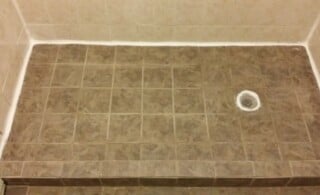 How to Re-Grout Tile: A DIY Guide
How to Re-Grout Tile: A DIY Guide 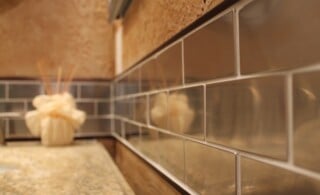 Subway Tile Calculator
Subway Tile Calculator 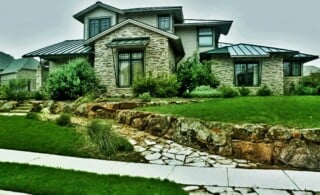 Green Building Glossary
Green Building Glossary 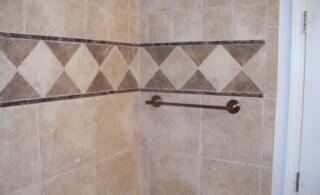 The Basics of Ceramic Wall Tile Installation
The Basics of Ceramic Wall Tile Installation 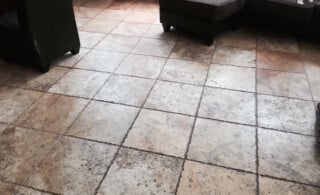 Stunning Travertine Tile
Stunning Travertine Tile 

Are You Familiar With This Topic? Share Your Experience.